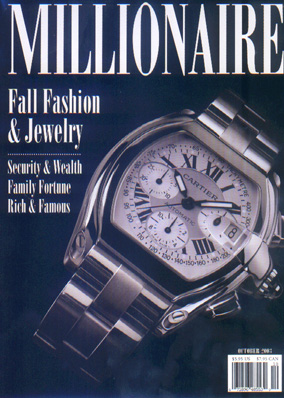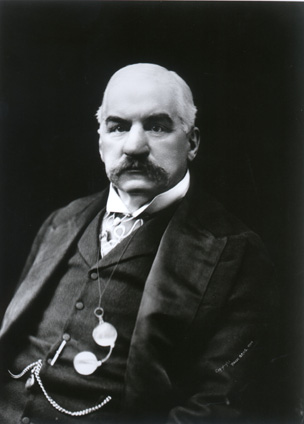

 |
 |
THE MORGANS - An American Family of Financiers by Kaya Morgan
 First of the Morgan dynasty, Junius Spencer Morgan, 1813-1890, started his early days as a dry-goods clerk in Boston. Later, he entered a brokerage house in New York City, and became a partner in several mercantile firms in Hartford, Connecticut and Boston.
First of the Morgan dynasty, Junius Spencer Morgan, 1813-1890, started his early days as a dry-goods clerk in Boston. Later, he entered a brokerage house in New York City, and became a partner in several mercantile firms in Hartford, Connecticut and Boston.
Born into money, son, John Pierpont, 1837-1913, was educated at a prestigious school in Vevey, Switzerland, going on to the University of Gottingen. Then in 1854, Junius moved the family to London and became a partner in George Peabody's merchant bank. Three years later, he arranged for his son, John Pierpont (J.P.), now 19, to train as an accountant at New York's Duncan, Sherman and Company, under the care of partner, Alexander Duncan. Within three years, young J.P. left to start the wholesale bank, J.P. Morgan & Co. beginning a meteoric rise in American financial affairs.
During the boom years of the 1870s, and throughout the 1880s and '90s, Morgan built the family fortune into a colossal financial and industrial empire by using his financial acumen to back numerous railroad reorganizations and mergers, as well as financing new railroad ventures particularly in the northwest United States. He financed manufacturing and mining, controlled banks, insurance companies, shipping lines and communications systems. Called upon to help finance World War I, he floated securities of foreign governments and corporations reaching $2 billion, while at the same time sponsoring over $4 billion in domestic securities.
Physically imposing with a large frame, massive shoulders, piercing eyes and a hideously disfigured nose, the result of a childhood skin disease, he had a tremendous physical effect on people. This, combined with a frequently abrupt and dictatorial bearing, made him a formidable competitor, drawing many empire-building industrialists into his arms.
His energy, insatiable desire and passion that was so well known on Wall Street carried over into other aspects of his life as well. An insatiable collector, he was passionate for all types of art from books, manuscripts, autographs, porcelain, watches, jewels, reliquaries, Chinese screens, paintings and master drawings, panels, regency furniture, oriental carpets, ivories, tapestries, bronzes, dress armor, Egyptian sculpture, ancient glass, gold medallions and snuff boxes. But, unlike most collectors, he was financially able to purchase and amass entire collections of the works he admired.
Since Morgan bought more art and literature than he personally could ever house, he began donating to many American public institutions — the New York Public Library, the Cooper-Hewitt Museum, the Wadsworth Atheneum, the National Gallery in Washington D.C., the Metropolitan Museum of Art, and the American Museum of Natural History.
Called "the greatest constructive financier" in the history of mankind, at one time, Morgan was said to have had more influence than the president. At the peak of his power in the early 1900s, he dominated a hundred corporations with more than $22 billion in assets including the first billion dollar corporation in history, U.S. Steel. Staunch supporters said he never abused his power. Morgan always saw himself as a force for the good, helping to transform America into the world's most powerful nation, while in private, he made large donations to hospitals, trade school and other institutions.

All rights reserved © 2003
Press Coverage |VentureCapital | Business Development | Venture Opportunities | Resources | Contact Us | Angel Extras | Home